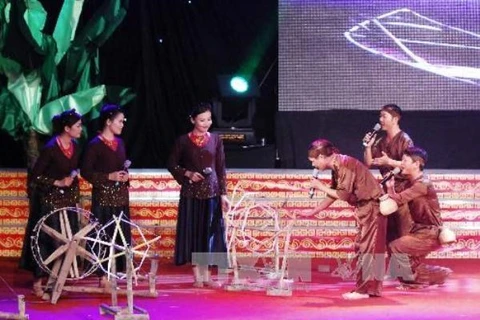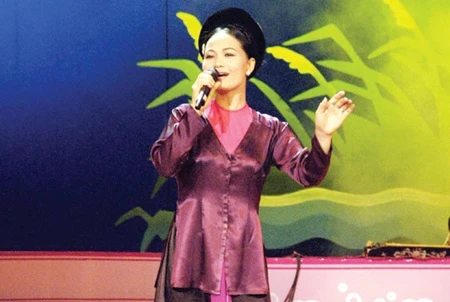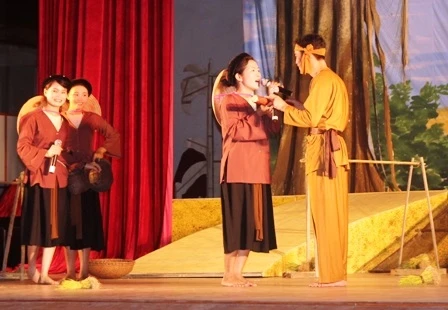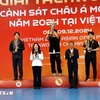Nghe An (VNA) - Students from 12 high schools, colleges and universities in the central province of Nghe An delivered brilliant performances at the first Vi-Giam folk singing festival for students, which opened in Vinh city on January 20.
The festival is held with the aim of encouraging the practice of Vi-Giam folk singing in schools while creating a playground for students to develop their musical and performing aptitude, thus helping preserve this age-old folk music genre.
Vietnam’s Vi-Giam folk singing was officially recognised by UNESCO as part of the intangible cultural heritage of humanity on November 27, 2014.
The folk music is a repartee singing while working. There are an estimated 15 tunes of Vi and eight airs of Giam, reflecting the work, cultural life and feelings of the residents in the central coastal provinces.
This type of folk singing is popular in nearly 260 villages in the central provinces of Nghe An and Ha Tinh. The two provinces have 51 singing clubs with over 800 vocalists, many of whom are actively preserving the folk music.
The preservation is currently facing a number of problems since fewer residents sing this genre of music and many of the documentaries relating to the singing were lost.
The country committed to implementing an action programme to preserve Vi-Giam singing, carrying out policies to honour artisans, and intensifying communication campaigns to educate young generations on this type of art.
Vi-Giam became the ninth Vietnamese cultural practice winning UNESCO’s intangible heritage status. The eight others are Hue's royal court music, Gong space culture in Tay Nguyen (Central Highlands), the northern province of Bac Ninh's Quan ho (love duet) singing, the Giong festival, Ca Tru ceremonial singing, Xoan singing, Don Ca Tai Tu music, and the worship of Hung Kings.-VNA
























